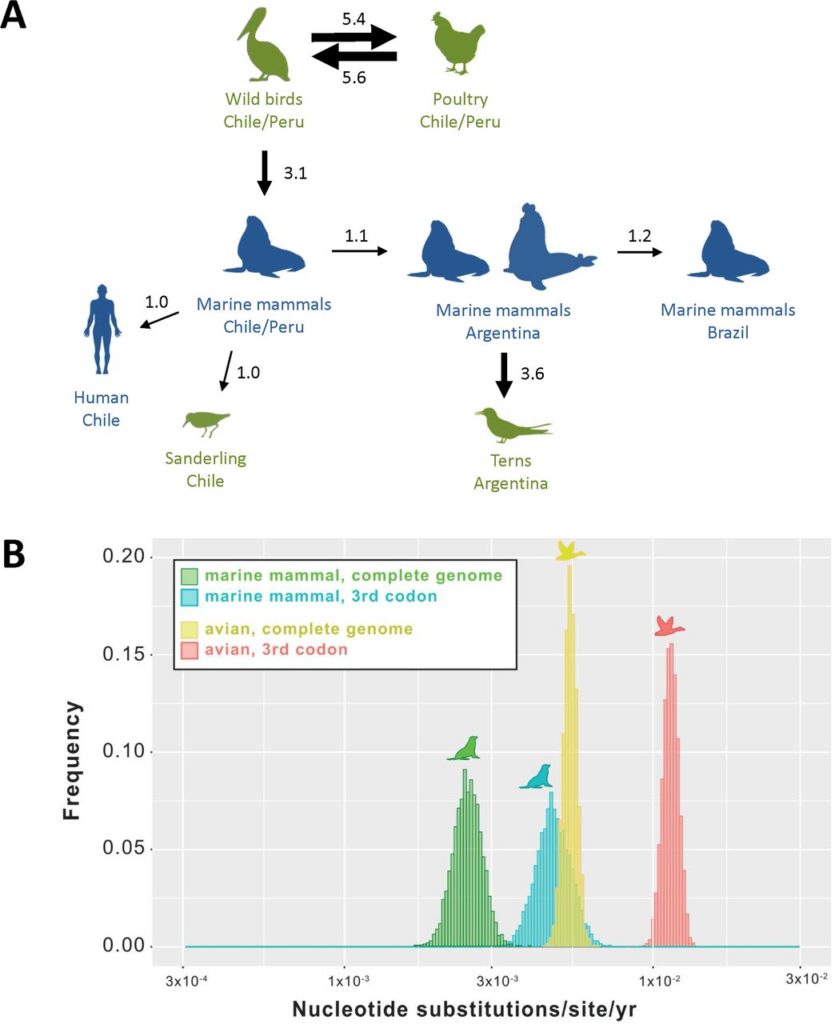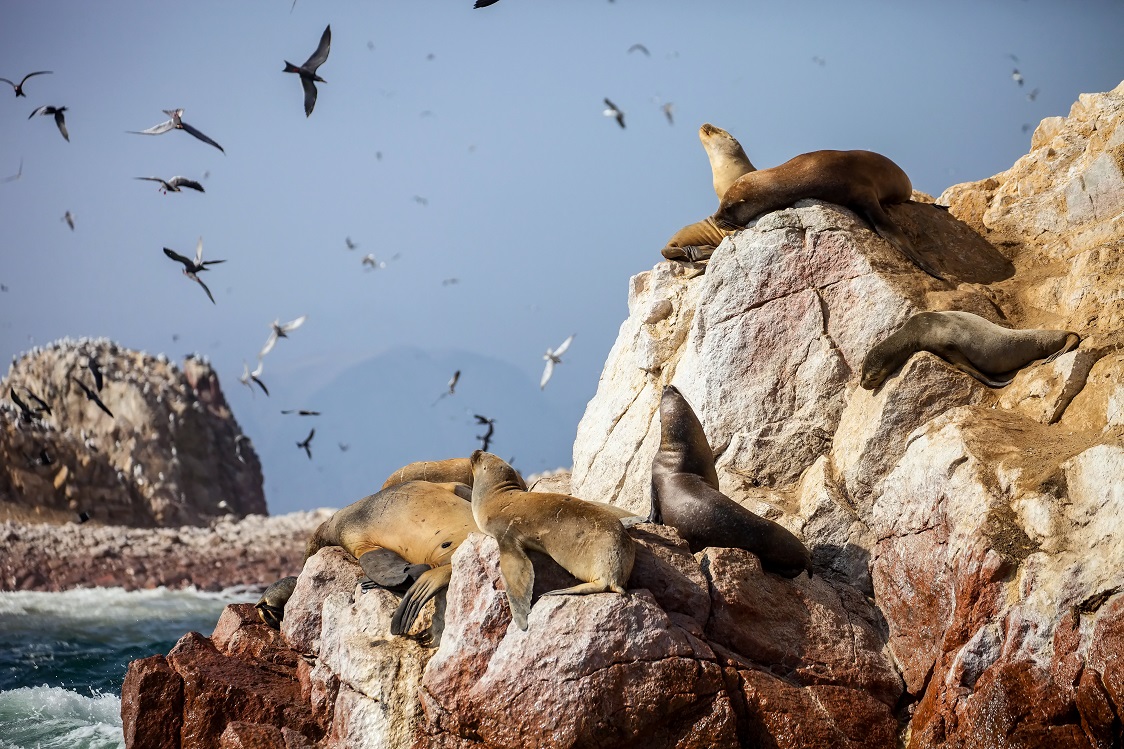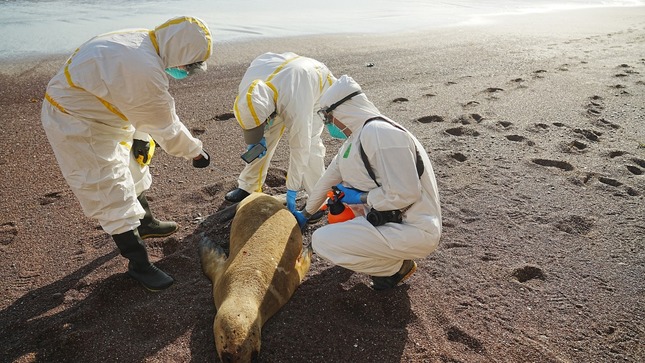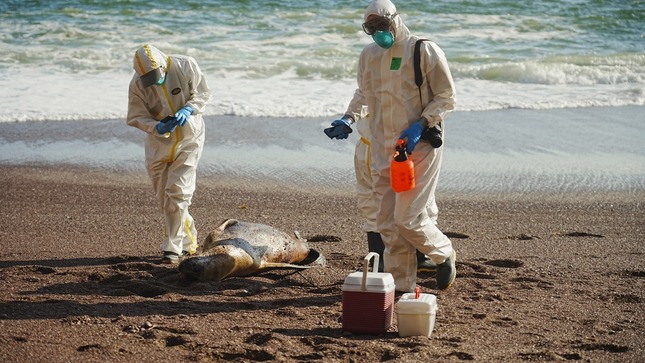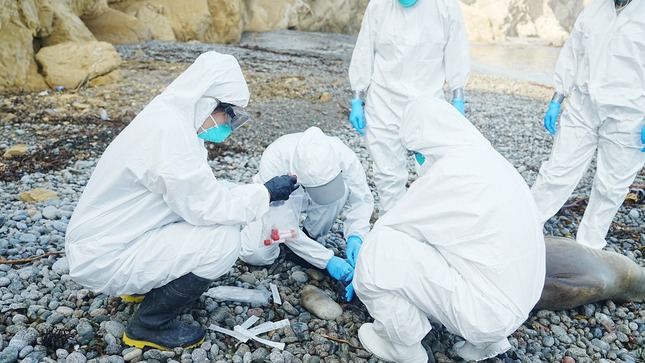Mammal-to-Mammal Transmission
Seals and sea lions live in colonies, often densely packed on small rocks in the ocean or at the coast. They are often in close contact with gulls, terns and other birds carrying the H5N1 virus. Seals and sea lions are carnivores and occasionally eat sick or dead birds. However, the rocks and surrounding waters are contaminated with infectious bird excrement which are likely to cause infections. For some time there was no conclusive evidence of mammal-to-mammal transmission and the primary route of infection was suspected to be bird-to-mammal transmission, occurring over and over again. However, some mammal-to-mammal transmission was nonetheless suspected. Now the widespread and almost total mortality of seal pups in Argentina is highly suggestive of mammal-to-mammal transmission. Seal pups don't predate birds and "little to no interaction" with birds was observed at those beaches. This mades some occurences of mammal-to-mammal transmission highly likely. A recent pre-print finally provides phylogenetic evidence for mammal-to-mammal transmission. Furthermore there is evidence of spillback from seals into the tern population and a distinct clade shared by terns and pinnipeds across South America, in Argentina, Peru, Chile and Brazil.
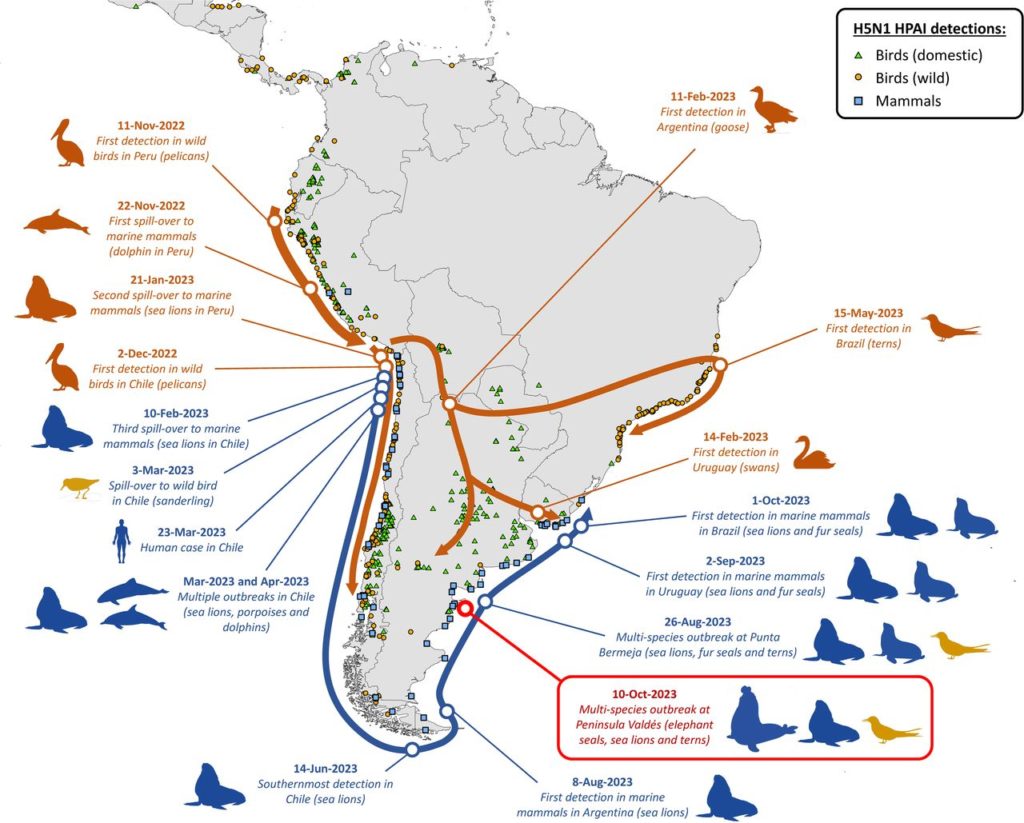
Chile
An ongoing mass mortality event including over 13.000 sea lions is associated with H5N1.
Peru
A mass mortality event including more than 5.000 sea lions is associated with H5N1.
Argentina
An ongoing mass mortality event including over 17.000 seals, mostly elephant seal pups, and 1367 sea lions is associated with H5N1. Additional adult elephant seal losses are expected, but hard to quantify due to the premature end of the catastrophic 2023 breeding season.
Brazil
An ongoing mass mortality event including over 900 seals and sea lions is associated with H5N1.
Uruguay
An ongoing mass mortality event including 400 seals and sea lions is associated with H5N1.
USA, New England, Maine
19 harbor and gray seals tested positive for H5N1.
Canada, Quebec
At least 11 harbor and at least one gray seal tested positive for H5N1. The number of deceased seals was reported to be around 100.
Russia, Caspian Sea
While hundreds or maybe thousands of seals have died in a mass mortality event, the cause has ultimately not been confirmed. While infection with some type of avian influenza was a preliminary result of the Dagestan State University, this has later been denied by Russia's Federal Service for Veterinary and Phytosanitary Surveillance. One case of H5N1 in a seal has been confirmed, but in a different location, just north of Japan.
Germany
1 seal tested positive for H5N1.
United Kingdom, Scotland
4 harbor and gray seals tested positive for H5N1.

